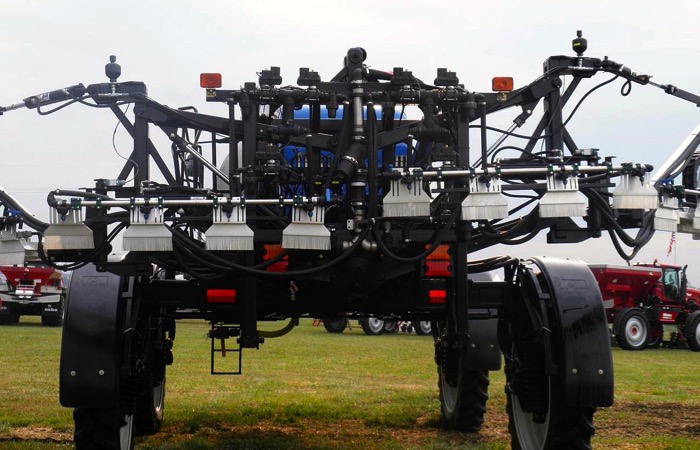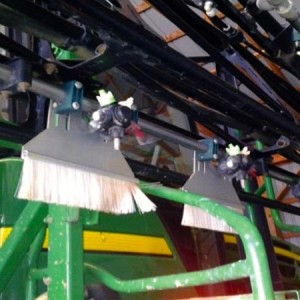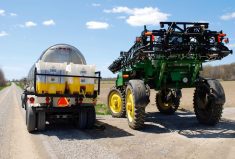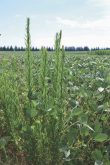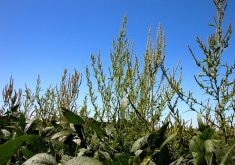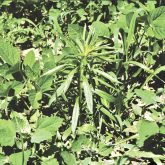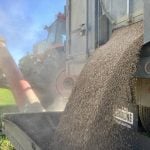Competitive broadleaf weeds, specifically lamb’s quarters and velvetleaf, are easier to kill when herbicides are applied during the day, generally between the hours of 9 a.m. to 6 p.m. Most will joke that this is simply because civil servants like me do not want to work before 9 a.m. and after 6 p.m. Touché. However, warmer air temperature, less dew, and the orientation of weed leaves to intercept more spray droplets are some of the factors that explain better control when post-emergent herbicides are sprayed during the day (see Figure 1).
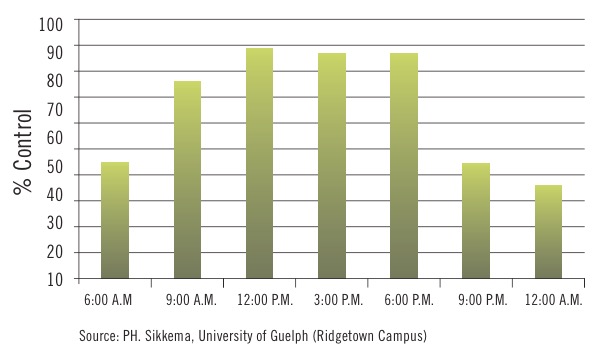
A time-of-day response has been observed by many scientists spanning several decades, so it’s not a fluke. However, the major objection with daytime spraying is that wind speeds are typically highest during this time, increasing the risk of drift. Although there can be days with high and gusty wind speeds, the risk of spray drift is just as significant during periods of dead calm which often occur in the early morning or late evening. At that time the temperature is usually cooler and the relative humidity is typically higher, which can result in the spray droplets remaining aloft, like fog. When the wind picks up, these spray droplets can move away from the target area, possibly causing injury to adjacent non-target areas. Off-target drift in calm conditions can occur hours after the spray event was completed*.
It is therefore more productive to focus on methods to maximize spray droplet coverage on the target during the day when wind speeds aren’t excessively high and gusty. During the 2015 Southwest Agricultural Conference in Ridgetown in January, I sat in on Jason Deveau’s talk on new sprayer tools and was intrigued by one item, especially since there was a grower in the room who was using the product and was pleased with its performance.
The product is called the “Pattern Master” by K-B Agri-Tech (see close-up at right and at top of page), and prices for different booms can be found at the company’s website. My crude math puts the price per unit at roughly $55. The manufacturer claims that the Pattern Master will “reduce drift and increase coverage” (see Figure 2 below). The American Society of Agricultural and Biological Engineers gave the Pattern Master its AE50 Outstanding Innovations Award for 2015.
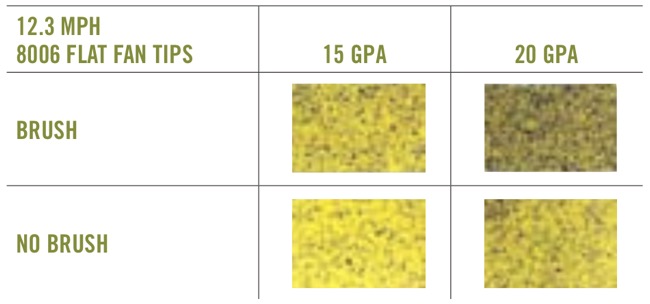
If you’ve been struggling to get good consistent weed control with post-emergent herbicides, and if inappropriate weed staging, poor environmental conditions and herbicide resistance cannot explain the poor control, it would be worthwhile to focus on improving coverage, reducing drift and spraying during the day. To see other sprayer tools and tricks, visit sprayers101.com or view Jason’s presentation at southwestagconference.ca.
Have a question you want answered?
Hashtag #PestPatrol on Twitter to @cowbrough or email Mike!
Read Also

Sensing the soil: Root cell research finds ‘stress hormone’
Research into how root cells react to soil stressors could help plants better adapt to changes in their climate.
* Taken from “Using Pesticides in Ontario” by Denise Beaton and Jason Deveau (Ontario Ministry of Agriculture, Food and Rural Affairs)

